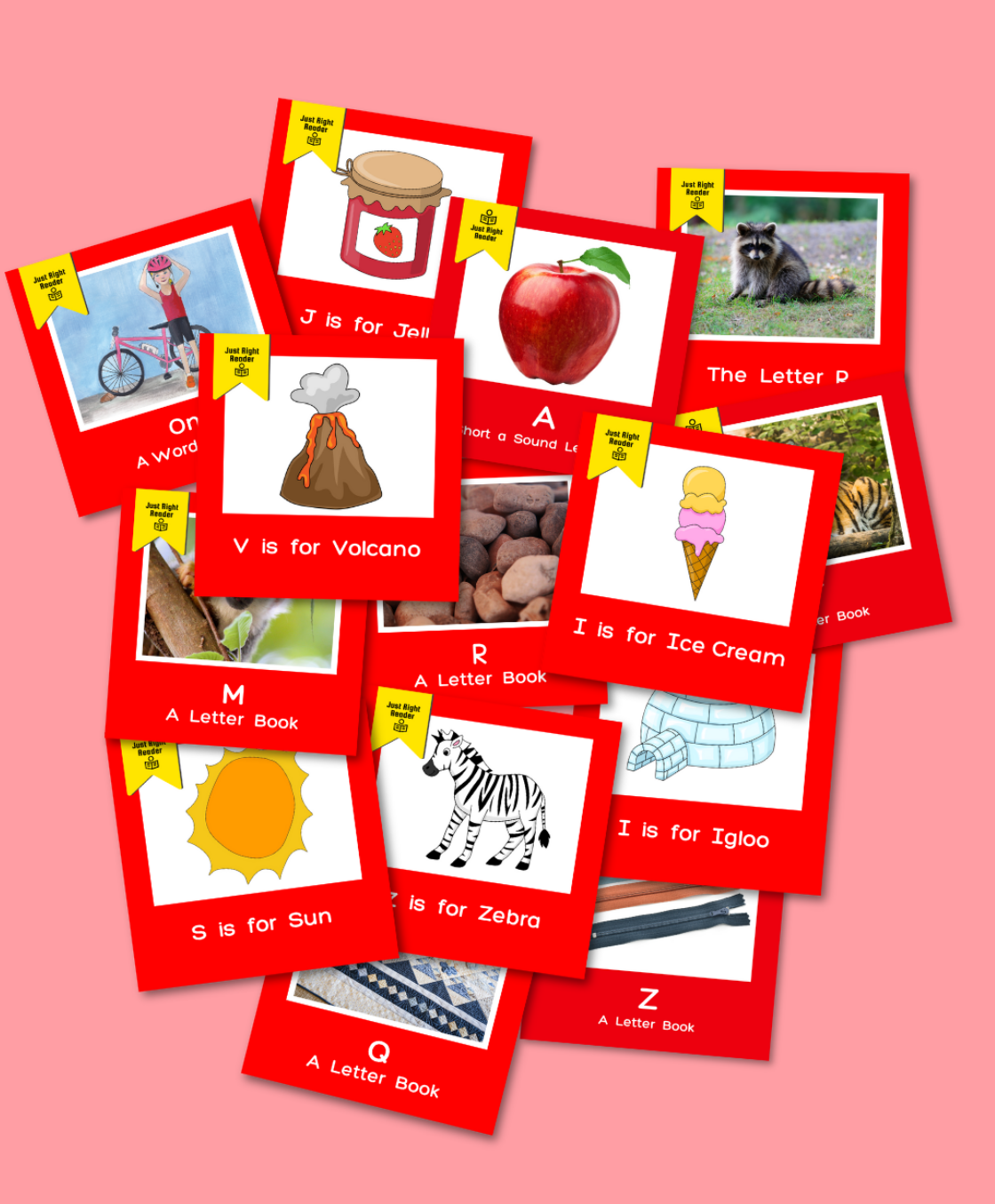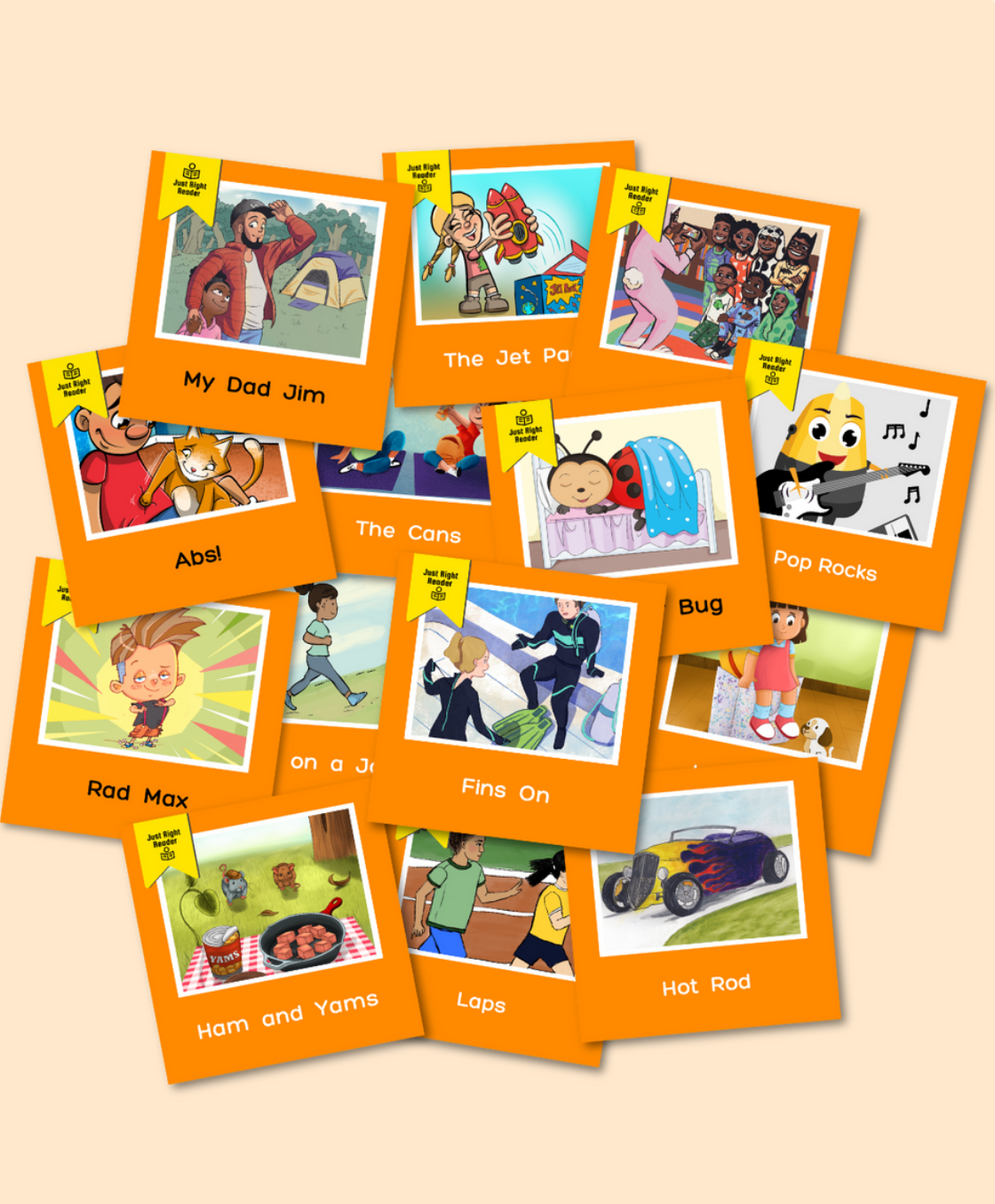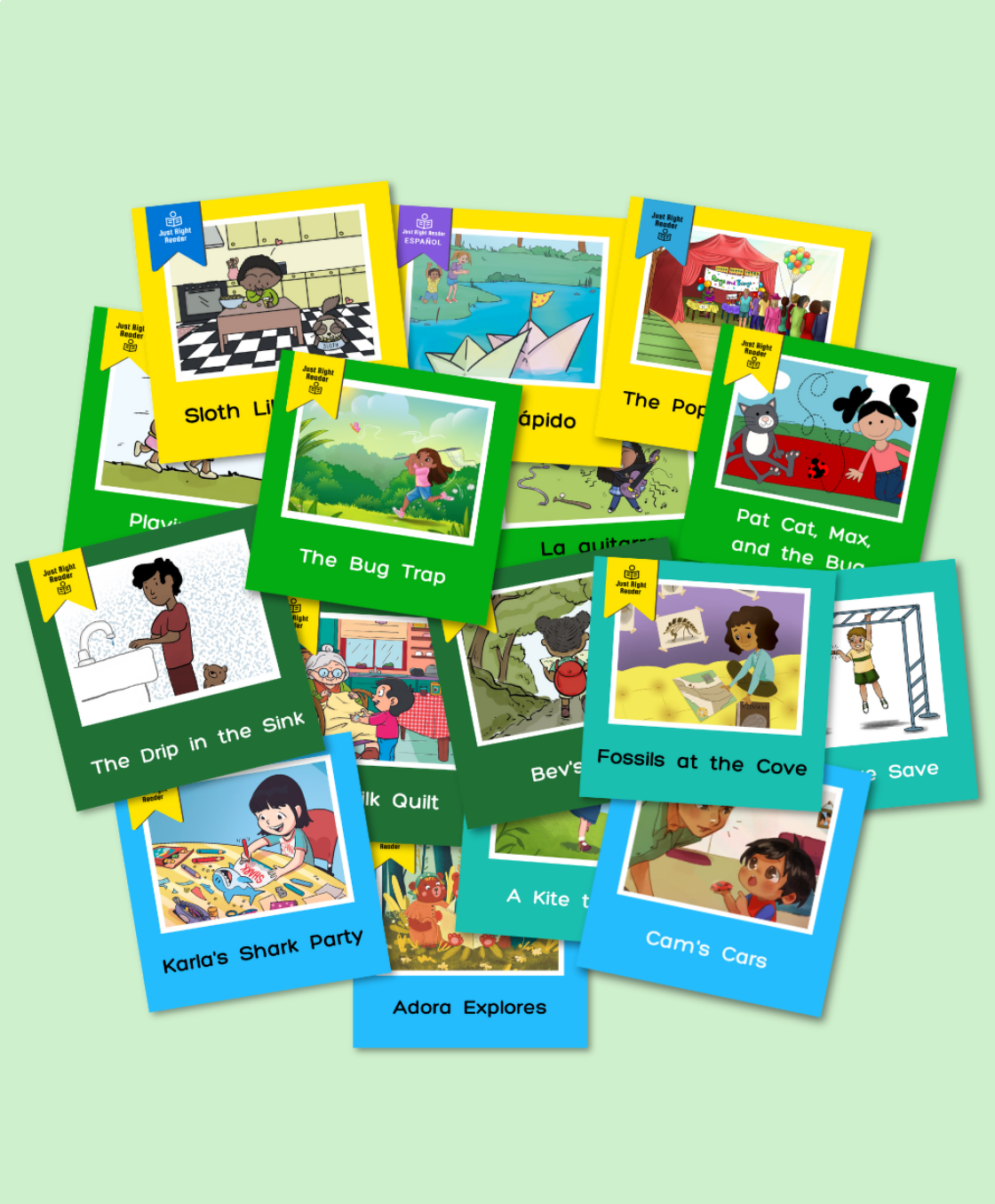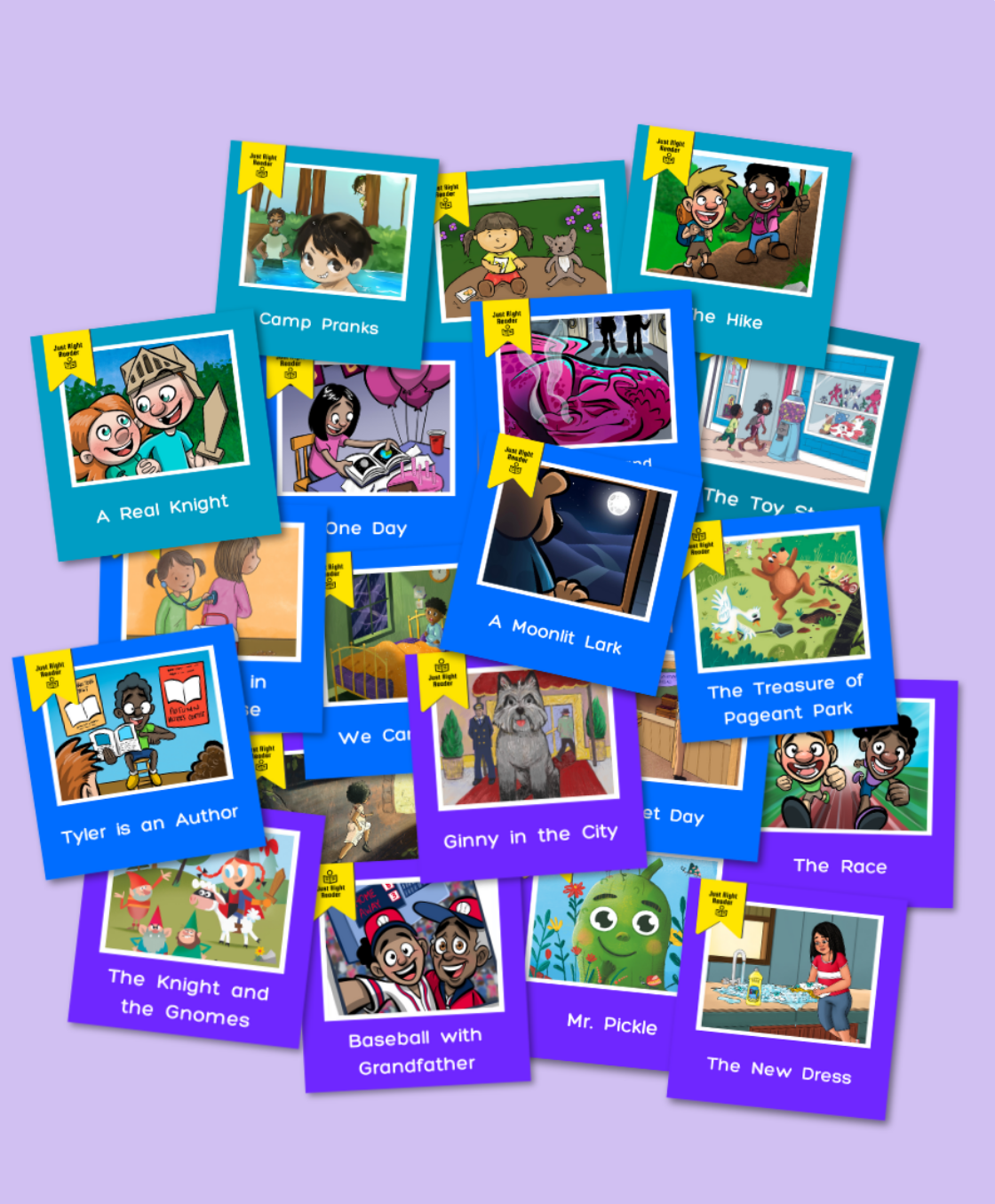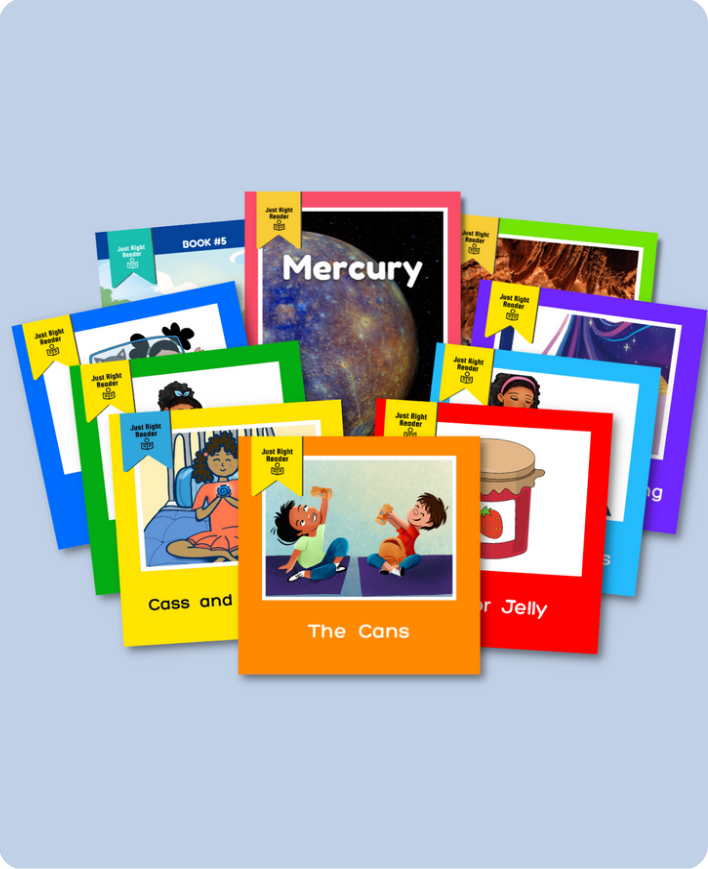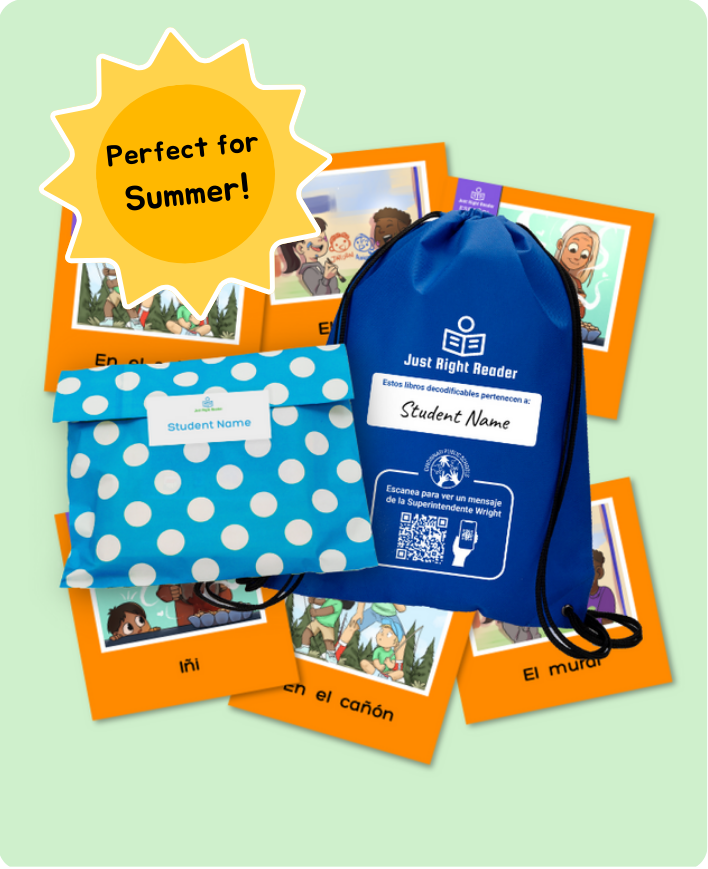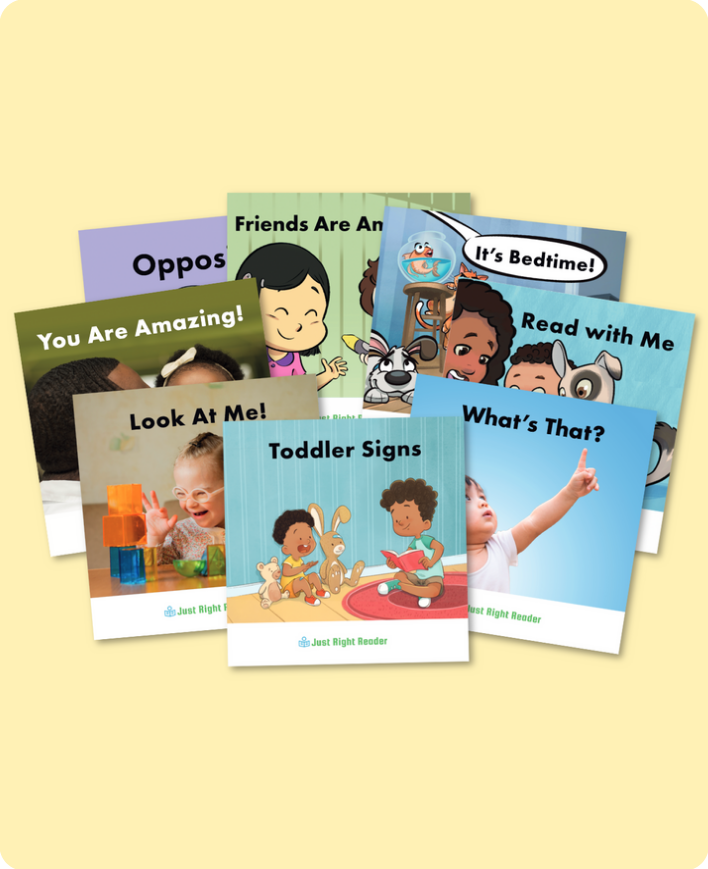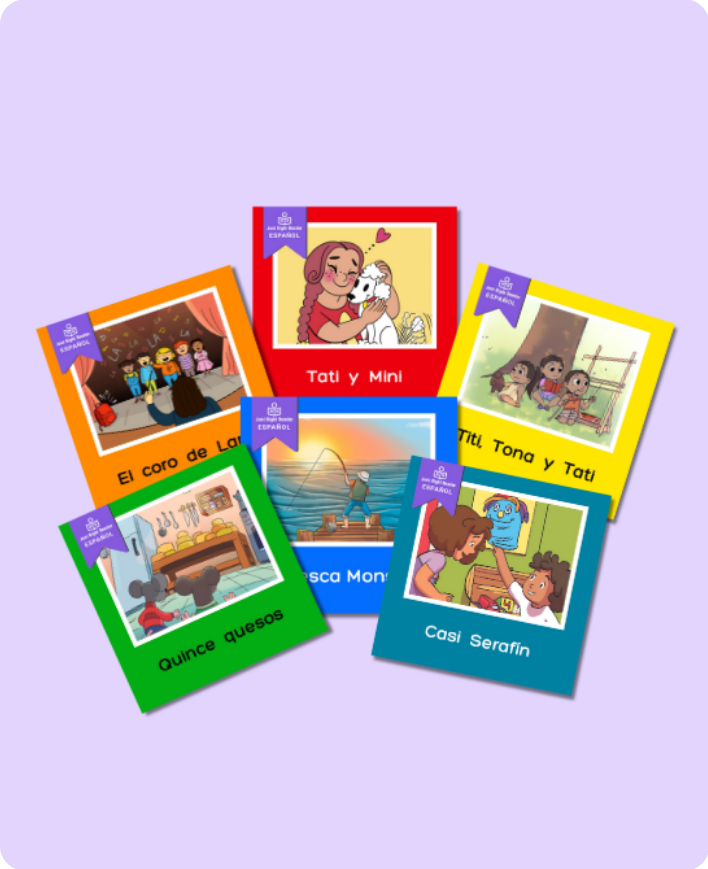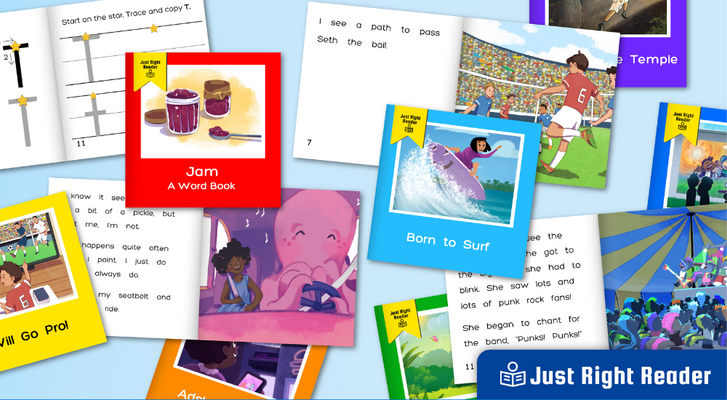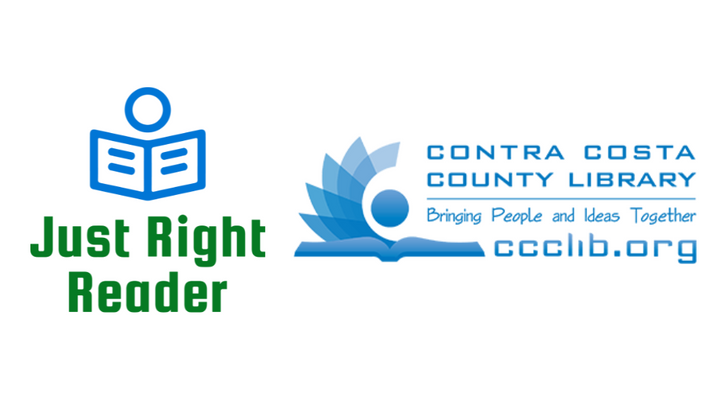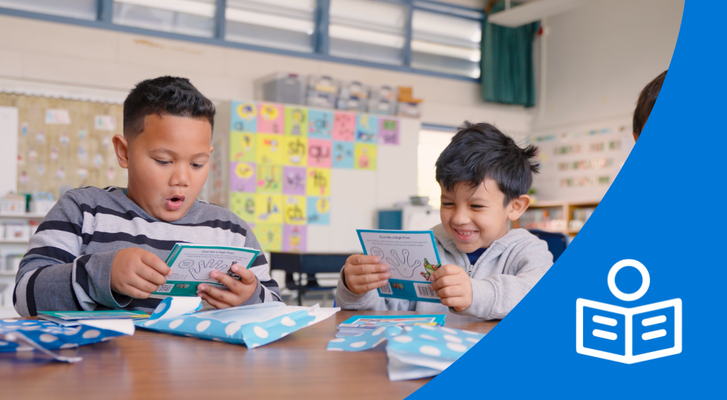
by Heidi Anne Mesmer
Dr. Heidi Anne Mesmer- award winning professor and program leader of the Reading Specialist Program at Virginia Tech- has the answers to help us understand the importance of decodables and unlock their power for students to find reading success.
Decodable texts are books for beginning readers that systematically control words to contain letter/sound patterns and high frequency words that the reader has been taught (Cheatham & Allor, 2012; Foorman et al., 2004). Some define decodabilty based on the degree to which words have simple, one-to-one relationships between letters and sounds (e.g. bit vs. beat) (Saha, et al., 2021; Juel & Roper/Schneider, 1985). I have also seen the term “accountable text” used because decodables hold students accountable for reading taught patterns (Blevins, 2021).
 Research suggests that when beginners read decodable books, they apply their knowledge of GPCs as they read (grapheme/phoneme correspondences) and demonstrate robust year-end decoding (Juel & Roper-Schneider, 1985; Mesmer, 2005; Vadasy et al., 2005). There appears to be a period, of about one year, in my estimation, where children know some GPCs but have not yet acquired all of them. If, during this time, we want young readers to practice decoding using what know, we must provide them with books that are decodable to them.
Research suggests that when beginners read decodable books, they apply their knowledge of GPCs as they read (grapheme/phoneme correspondences) and demonstrate robust year-end decoding (Juel & Roper-Schneider, 1985; Mesmer, 2005; Vadasy et al., 2005). There appears to be a period, of about one year, in my estimation, where children know some GPCs but have not yet acquired all of them. If, during this time, we want young readers to practice decoding using what know, we must provide them with books that are decodable to them.
Think about a group of readers who know all consonants and the laxaandisounds as incat, big. If we give them a book with words like hair, mine, crop, and scissors, they really can’t decode. This puts them in a situation where the only thing theycando is guess, use syntax, and/or pictures to recognize the words.
Below are a handful or “Dos” and “Don’ts” for using decodables. This is not a rigid set of “rules,” but a simple rhetorical structure for translating current research around decodables for teachers who want to use them.
The Top 10 Do’s of Decodables
1. Do: Coordinate reading with phonics lessons

I see people put books in children’s hands without checking the phonics content. It’s as if label makes it decodable. Oh, that it was true! What makes a book decodable is if it matches what children have been taught (and learned.)
The easiest way to know the phonics content in a text, is to look for the table on the back or inside cover. As seen here, The Gum Hut focuses on short (lax) u and has the high frequency words and, we, and look.The table even lists the specific short u words in the book. This book would be perfect after a phonics lesson on short u.
2. Do: Model and practice words on their own
“No cold decodables.” By that I mean two things. First, have students practice reading words in isolation like the ones that they will read in the book before text reading.For The Gum Hut¸ this would mean the words lug, fun,and hut but also similar words like run, nut,or hug.Teach decoding first; practice it in the book.
"Just because students know letter-sounds, does not mean they know how to blend the sounds into a word."
Second, make sure that readers know how to sound out words.Just because students know letter-sounds, does not mean then they know how to blend the sounds into a word. That is a different skill and must be taught. To model sounding out, use extended phonation, where you slowly say the sounds of words without stopping between them (e.g., mmaaann) and then pronounce the word connecting it to meaning (e.g., “Oh like a man took my ticket) (Gonzalez-Frey & Ehri, 2021).
3. Do: Review high frequency words
Decodable texts include taught high frequency words some of which have less common patterns (e.g.,the, of, said, for, to, go). High frequency words are essential to sentence construction. Imagine trying to write sentence without the!Sometimes teachers tell students to visually memorize these words saying, “You can’t sound it out.” This is not true (Seehere.) When dealing with a less regular word, tell students which graphemes (letters) match to which phonemes (e.g. said = s =/s/ e= /ai/ d= /d/.) Only about 37 % of high frequency words have less regular spellings and the others have only one deviation, usually at the vowel level. The remaining 63% follow common patterns.
4. Do: Do a "book walk" before you start reading
Picture walks are designed to acclimate students to book content and vocabulary using pictures and to trigger identification of words that the students might read. Of course, pictures are not what is read but walking through the book might still be a good idea.
"Ask students to find words that they can read or practice words that you think might be tricky."
I suggest focusing on words not the pictures. Do a “book walk” where you proceed through the book asking students to find words that they can read or practice words that you think might be tricky (Mesmer, 2019). This exposure especially supports students who are in the very early stages of decoding to feel more confident.
5. Do: Leave room for self teaching
I was working with kindergartners on a shortidecodable, and I noticed that the book had the words still and swim.I knew that they knew shorti, and all the consonant sounds but had not been taught the consonant clusters st- and sw-. “Oh shoot! This is not the right book,” I thought but they were walking across the room for small group. (Oooops!) I figured I would model those words during the book walk. However, as we began, I decided to see what they could do with those words before I modeled. To my surprise, after a bit of work, they blended both swim and still. This is “productive struggle”-- a student, in possession of the necessary skills, grapples a bit to get the answer.

From a literacy perspective there is something else going on here “self teaching.” When readers know letter-sounds, they can decode words independently, even ones that they have not seen before (Share, 1995). They can apply their knowledge and “self-teach” new words. A child may not have seen a precise word but know the parts—see what they can do! One caveat: Do not do this too often and be at the ready to support students. This is not a suggestion to turn students loose if they do not have requisite letter/sounds but a suggestion to challenge them on occasion.
6. Do: Focus on meaning for uncommon words
The last and essential part of decoding a word, the part often forgotten, is connecting the word to meaning, recognizing the word as one you know. Decodable books can contain words that children have not heard before, like the word lug. Before reading the book, have learners decode the word and then provide a definition and examples of the meaning. For example, “Lug. That means to carry or drag something heavy. Like I lug my backpack with all my stuff to the car. Can you think of something else you might lug?”
7. Do: Be accepting - fluency will wane at times
Although we do not want students stumbling, sputtering, and struggling through every word, decodable texts will require conscious attention to sounding out words and thiscan slow things down (Mesmer, 2010) but not always (Saha, et al. 2021). Some panic about fluency. I like to remind teachers that with any skill you must become accurate before you can become faster or fluent. This is basic to any skill acquisition. For example, with piano scales students begin doing them slowly and accurately, striking the correct notes and then getting speedier. Compromised fluency is entirely developmentally appropriate. In fact, Jeanne Chall (1983) called the beginning reading stage “glued to the print” because the milestone IS decoding not fluency. In the next stage, confirmation and fluency, the goal is to “speed” up.
8. Do: Differentiate the use of decodables
As with any skill level, decoding will vary. Some students blend through words seamlessly and others need more practice. What this means is that some children will need more decodables to practice and others will need fewer, or none at all (Durkin, 1966). If a child breezes through a decodable, challenge them with more advanced texts, or better, obtain a reading level. Most of the research suggests that once students have mastered the many vowel patterns, usually at a reading level of 2+ , they may not need decodables (Juel & Roper-Schneider, 1985).
"Some students blend through words seamlessly and others need more practice. What this means is that some children will need more decodables to practice and others will need fewer."
Children who are at different places in their decoding development may require different approaches to the first reading of a decodable (Lindsey, 2021). When children practice sounding out isolated words ahead of the reading, evaluate decoding skill. For a child who takes some time to sound out words, do choral reading with the teacher, where everyone reads out loud. After the first reading, students reread the book immediately several times, either with a partner or by themselves. A nearby teacher should be listening to provide corrective feedback (e.g. “Did that say sit?”). If a student finds decoding practice fluid or word walk easier, then allow the students to do the first reading solo, with a teacher nearby to offer support. Then student may reread the book again immediately.
9. Do: Reread decodables at home
 One of the real joys of decodables is the “I can do it!” feeling. Reading a book on your own is one of the milestones of school, not unlike starting kindergarten, riding the bus, or making a friend. Decodable texts are a place to showcase this accomplishment to adults. “Wow! You can really read!”
One of the real joys of decodables is the “I can do it!” feeling. Reading a book on your own is one of the milestones of school, not unlike starting kindergarten, riding the bus, or making a friend. Decodable texts are a place to showcase this accomplishment to adults. “Wow! You can really read!”
For home use, Just Right Reader offers “Take-Home Decodable Packs” that include a collection of full-color decodables packaged in a brightly colored bag and a “book of fun” with games and activities. Gone are the boring blackline photocopies that usually get sent home. Just Right Reader decodables also have QR codes on the back covers that link to videos that give an overview of the story and the phonics. A quick scan before the reading and an adult can know just what the focus is, “Pay attention to the /u/ sound likecut.”
10. Do: Reread decodables from one, two, and three weeks ago
Systematic review is sorely missing from phonics instruction, and this is true of decodables (Blevins, 2021). Skills get intensive attention for a week and then it’s on to the next thing. Depending on the student, it can take 4-6 weeks for information to really “stick.” So, for the average and below average student, each week reread the decodables from 2, 3 and even 4 weeks ago. Listen to the students and reteach content that is not fluent (e.g., “Ok a lot of you are coming tooiand you are getting stuck or reading it like ano.Bol and not boil. Remember oiis /oy/. Let’s spell some words with that pattern.”) Not everyone will need this review. If a student flies through the book impatiently, then have that student do other things.
4 Things NOT To Do With Decodables
Don’t: Use a decodable if the student doesn't know the pattern
This is really a mirror of the first “do,” but worth restatement. To make use of the decodable scaffolds in the text, the child must know the patterns. The text does not teach the child. The teacher does that. So, if you know, for example, that you have not taught the laxe, then handing a child Get Wet will not help them. If possible, use assessments to guide choices because sometimes things that we teach do not get learned.
Don’t: Pre-read the entire decodable for the student
One of the ineffective, leftovers from the leveled text era, is prereading the entire book for students the first time they encounter the book. This is done because the levels differ by: a) the number of words in the text and b) the length of sentences (Cunningham, et al. 2005; Hatcher, 2005; Hiebert & Tortorelli, 2022). Because words are not decodable, the main word recognition scaffold must be memory, repeated and/or predictable sentence stems, and a teacher providing first access to the words. People used to believe that simply rereading these books would help students retain words, but research has dispelled that (Johnston, 2000).
My perspective has evolved in the past two years. I do not think that we need to “preread” decodable texts for students. If the texts are matched to knowledge, there has been some decoding practice, and a book walk is done, students should be ready to read. Even with the students who need the most support, I suggest a choral reading. During this first choral reading the pacing might be a little slower to allow for the students to blend harder words. The teacher’s voice rises and falls in volume as needed.
Step back and ask, “When did I teach this pattern? Have I taught them how to blend a word? Have they had practice decoding words with this pattern in isolation?”
If you must preread the text so that the students will be able to recognize the words, then it’s not decodable to the student. Step back and ask, “When did I teach this pattern? Have I taught them how to blend a word? Have they had practice decoding words with this pattern in isolation?”
Don’t: Ask students to read silently
This one goes without saying to the kindergarten and first grade teachers out there. At these beginning stages, where decoding is such a focal point, students do not read silently. Even if they lower their voices, they do something called “subvocalizing” which is talking under their breath. This is developmentally appropriate, and it helps students self-check their decoding. It is also useful for a teacher to hear what they are reading, and to step in where needed. Eventually this changes as they recognize most words by sight and become more rapid.
Don’t: Decode without checking the pronunciation
Educators have moved away from the three-cueing systems-- the approach that equally values the use of meaning, graphophonemic information, and syntax to recognize words during text reading. Skilled readers have strong context-free word recognition skills that reflect robust alphabetic knowledge and do not rely on context or pictures as a first approach to word reading (Stanovich, 1980). Unfortunately, some believe that this means that readers shouldnever think about context as they are text reading.

Actually, using meaning, syntax, and context should be a cross checking system once the reader has decoded (Duke, 2020). I like to say, “It’s not matter of if readers should use context. It’s a matter of when.” If a student misreads a word a teacher might give a generic prompt like, ‘Something tricked you,” and if the student still mispronounces again say, “Does that make sense? We mapped the floor?” In his 1998 book, Reading Instruction That Works: The Case for Balanced Teaching Pressley, explained “Meaning cues are critical, however, in appraising whether decoding was done properly: if the decoding makes no sense given the context, the good reader knows to go back and look at a word again (p. 78).”

